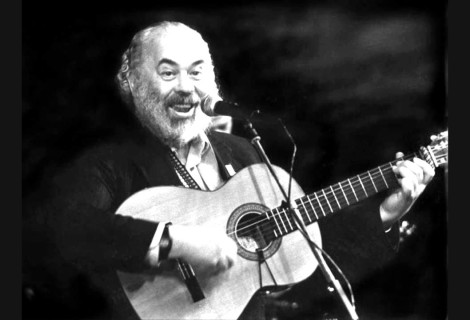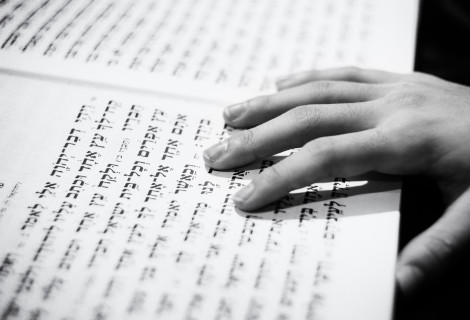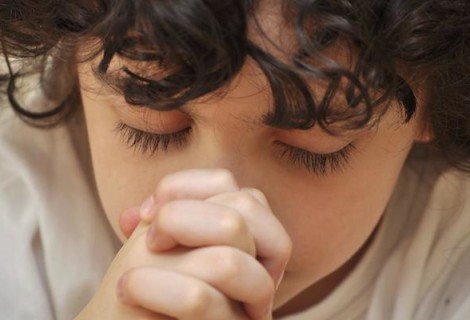The Four Target Markets
In every business, non-profit or educational venture the key to success is understanding the Target Market or Audience. In this article, I have divided different strategies for Tefilla success based on 4 target audiences, both in formal and informal educational settings.
The Four audiences are:
- Elementary school classes
- Middle school classes
- High school / Post high school classes
- Youth movements / informal educational groups (ages 14+)
Here is a short breakdown of each of these target audiences, and a brief description of what framework is relevant for each one.
Elementary school classes (grades K – 6)
The key to the elementary school classes is to keep it short and simple. Never try to bite off more than you want to chew, and the key principal for success is “Less is more”. Any elementary school educator needs to remind himself/herself that the goal is not for the students to function in a synagogue setting after 6th grade, and it’s not even to prepare them for their bar/bat mitzvahs. There should only be one clear and simple goal for the elementary age group – to make Tefilla an important part of every day life. In other words, making Tefilla a positive experience. This may seem setting the bar too low, but I challenge you to achieve this goal with more than 90% of your students. Chidren, especially ages K – 3, will be naturally attracted to Tefilla if we as educators introduce it properly. They are impressionable, will show off for their parents and have no shame in singing Tefillot out loud. It is the foundational age, the time when we as educators set foundations for skills, values and their emotional experiences around certain life events.
Select the few Tefillot that you want the kids to really know and keep it short. Less than 15 minutes for ages K – 2, for sure, and slowly, gradually introduce more Tefillot. Do not worry about any obligation surrounding Tefilla, or setting them up for launching them into the Synagogue world of Tefilla, regardless of your denomination. The “formal” Tefilla system is not kid friendly, and when educators try and insert the Synagogue Tefilla system in early classes, it’s doomed for failure from the start.
Kids want to sing out loud, sometimes even dance (in an organized fashion, of course), look forward to daily routines and desparately seek consistency. Tefilla should be an every day activity, never “skipped over” because of other priorities, in order for the Tefilla experiences to be projected as an important part of each day. So, select the Tefillot you really want the kids to know, cut out the rest initially, and even settle for a power-packed 10 minute Tefilla session, instead of a drawn-out, uninspiring and potentially boring 30 minute Tefilla session, because you have “Tefilla” inserted in your daily schedule for 30 minutes. Instead, make the Tefilla experience shorter, out loud with songs and chants the students are familiar with and give a short 15 minute interactive lesson about some of the Tefillot. Let them learn about it as part of Tefilla.
Middle School Classes
Being a Middle School teacher and Tefilla leader for over 5 years, I have experience with this age group, and have successfully lead many classes, both boys and girls, to a positive student engagement experience. Middle School students can be tough, somewhat rebellious and unwilling to belt out tunes together, or volunteer. Any middle school teacher knows this well.
However, this audience is peer – driven, and thrives on incentives, positive reinforcement and peer accountability. As well, they thrive mostly when led by a true disciplinarian as their teacher, instrucor or educator.
Assuming that many of the kids who have reached middle school have at least some background in Tefilla and know the basic tunes, chants and songs from previous years, camp, synagogue Tefilla group or other informal settings, there usually is a foundation to work upon. The problem is that very foundation may be the students’ negative association with Tefilla, putting the teacher / leader in a position where they are combatting a negative experience as well as leading Tefilla for the group.
The key elements to successfully running a Tefilla for middle school students are the following:
- Keep the rhythm flowing. Don’t allow any parts of the Tefilla to be completely silent and “dull” or “boring”. The only exception is the silent Amida, of course, which is the epitome of the Tefilla, the goal that you are climbing towards each and every day.
- Create mutual accountability as a collective. Whether it be through incentives, prizes, group rewards or other methods of student motivation – the key is to keep it in the group realm, and never make it about individual performances. The Tefilla design is being said as a collective, in a minyan (whether that be of ten men, or of mixed genders or only women), and the group needs to be accountable for each other. That means, if one person is out of line and there is a group consequence, or a consequence for that individual who will not join the group incentive, the message must be clear that each group is evaluated as a collective and not by their individual performances.
- Give them ownership over the Tefilla. Incorporate Chazzanim, leaders from students, let them select their own tunes (initially, or eventually), take initiative over special Tefillot like Hallel, Kaballat Shabbat, etc. Once they make it their own – the teacher turns into a facilitator, which is ideal.
High School Age (formal)
This may be the trickiest age to incorporate Tefilla on any level. Even (or especially) for students who grew up with Tefilla as an everyday routine. That routine may be shattered, challenged, rebelled against or just ran some “expiration date” once a student reaches his/her high school age.
The 3 main principals remain true, and the main focus for success with high school groups is to incorporate “buy-in” from the participants. They are not kids who can be given a structure and be expected to automatically comply. These are young adults (especially in today’s world). The “ownership” piece is key here, especially when it comes to Chazzanim, reading the Torah, Gabba’im, appointing Chazzanim and any other job that can be delegated to students should be done so. The leaders of the group can hopefully rally the rest of the students, but never underestimate one key element that is usually overlooked for high school students – Saying Tefillot out loud.
You may be thinking that I’m crazy, but I’m not. The false assumption is that high school students can run a minyan like adults, who basically have 80% of the Tefilla silently (especially in Ashkenazi communities), aside from responsive Tefillot, like Kadish and Kedusha. Our goal as educators is not to give them a halachacially sound experience, so they can “check off” their obligations, rather it is to inspire the future generations to have a positive association with Tefillot and Judaism as a whole for these emerging young adults. So, why not create an inspirational framework? Say the entire Tefilla out loud!
To clarify, this breaks down into 3 levels:
- The Tefillot that are chanted or sang out loud as a group
- The Tefillot that one reads out loud and everyone else says quietly to themselves
- Silent amida – where everyone recites quietly, and is used for a time for reflection, meditation and focus
The teacher/facilitator role is to excite and inspire the students to get into the Tefilla. The best way to achieve that goal is to create an environment that will generate activity. Passive students is a recipe for disaster when it comes to Tefilla. Saying the Tefillot out loud, based on the format above, gets students to be active participants and eliminates many of the “Boring” aspects of Tefilla.
Here is an example of a school who incorporated many tracks of Tefilla, to diversify it and make it exciting for students to “choose their own adventure”:
Many tracks for Tefilla – http://www.heschel.org/page.cfm?p=266
Informal settings 14+
For most informal Jewish groups, the youth participants are looking for an experience, memories that will last a lifetime. Whether it be a youth group, a camp or any other Jewish informal educational setting, those youth are thirsty for positive experiences. Why not make Tefilla an experience to remember?
Using the principles listed above, make Tefilla a priority for these young teens, not a chore. Tefilla should be something exciting to look forward to, not another Jewish ritual on a “to-do” list. What’s the key? Songs. Create the memories that will last a lifetime, by getting the teens involved with singing the Tefillot. Even if it’s short and sweet, they will recall the melodies and tunes, hum them into their adulthood and treasure those positive moments that will help fuel their Jewish future and connection. Let’s utilize these settings to truly make a difference.
Do you ever see kids get up and sing Birkat Hamazon out loud, banging on tables, doing nifty (and corny) hand motions? What’s the feel in the room? What feelings to you leave with? For starters, those teens will remember the words of Birkat Hamazon. But more than that, the memory of Birkat Hamazon will forever be etched in their minds as a positive and building experience. That’s the power of Jewish informal education. That’s the power of Tefilla as kids. It’s not boring – it’s thriving. It’s not a chore to be done each day, it’s something I look forward to when I wake up in the morning. It’s an opportunity, not a drag. Let’s make those memories for the next generation of Jewish children.







